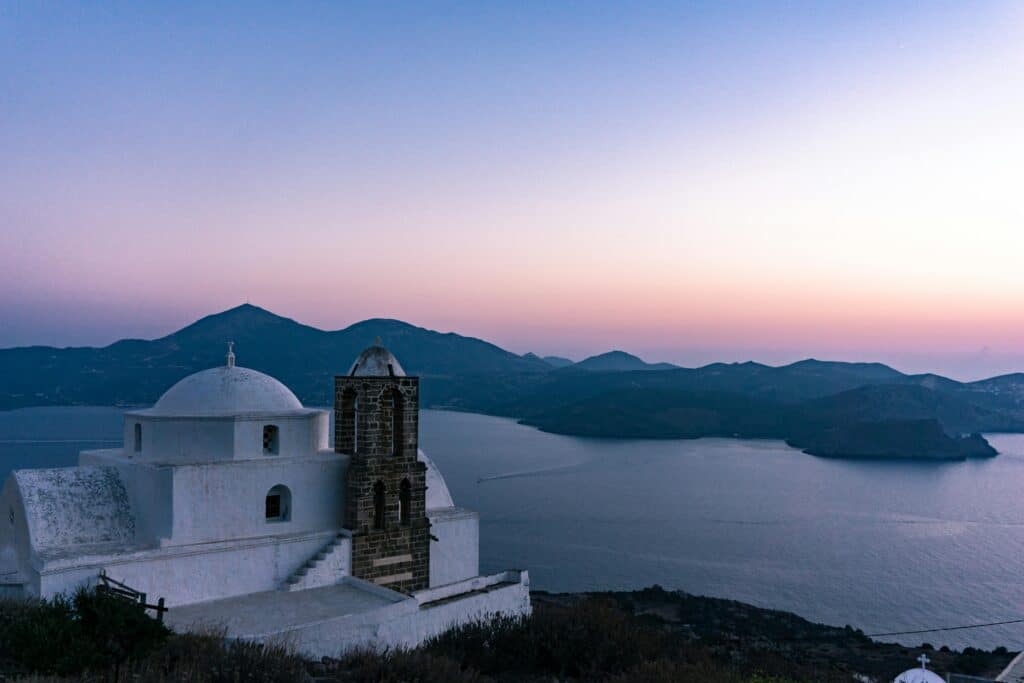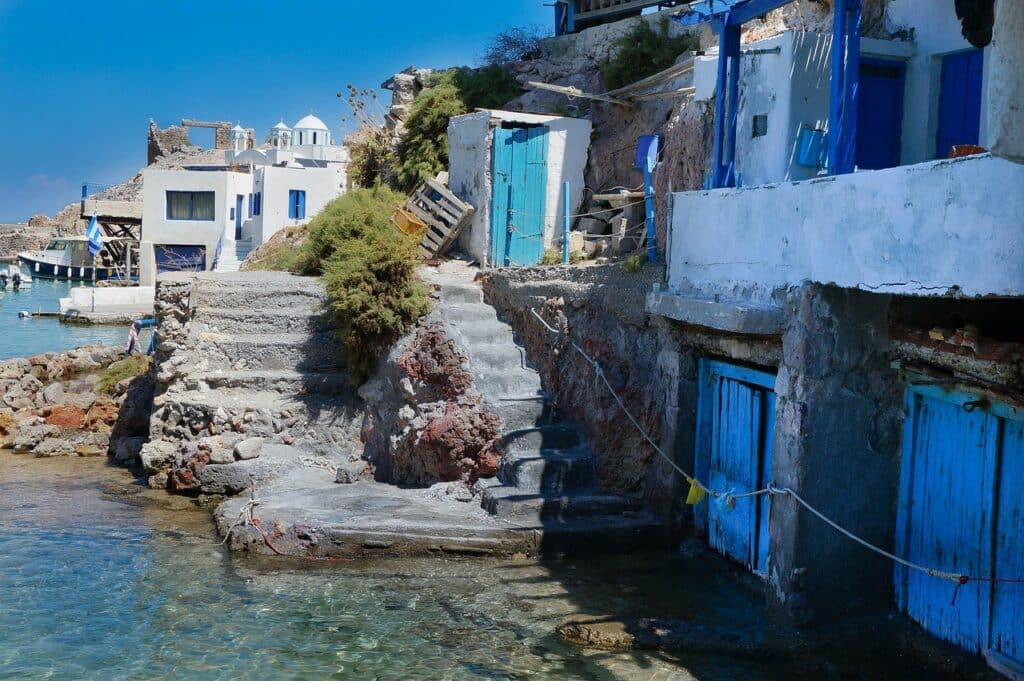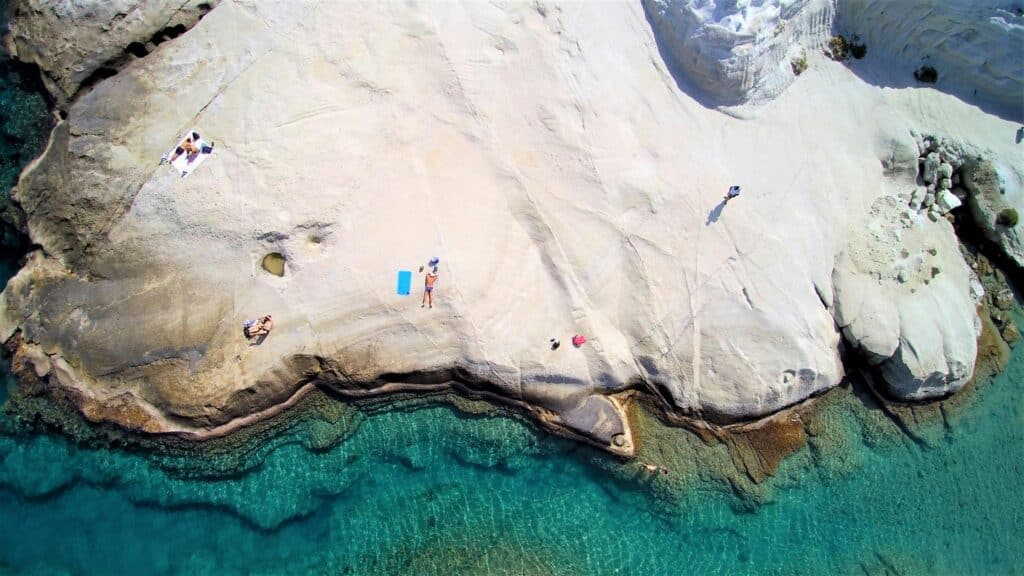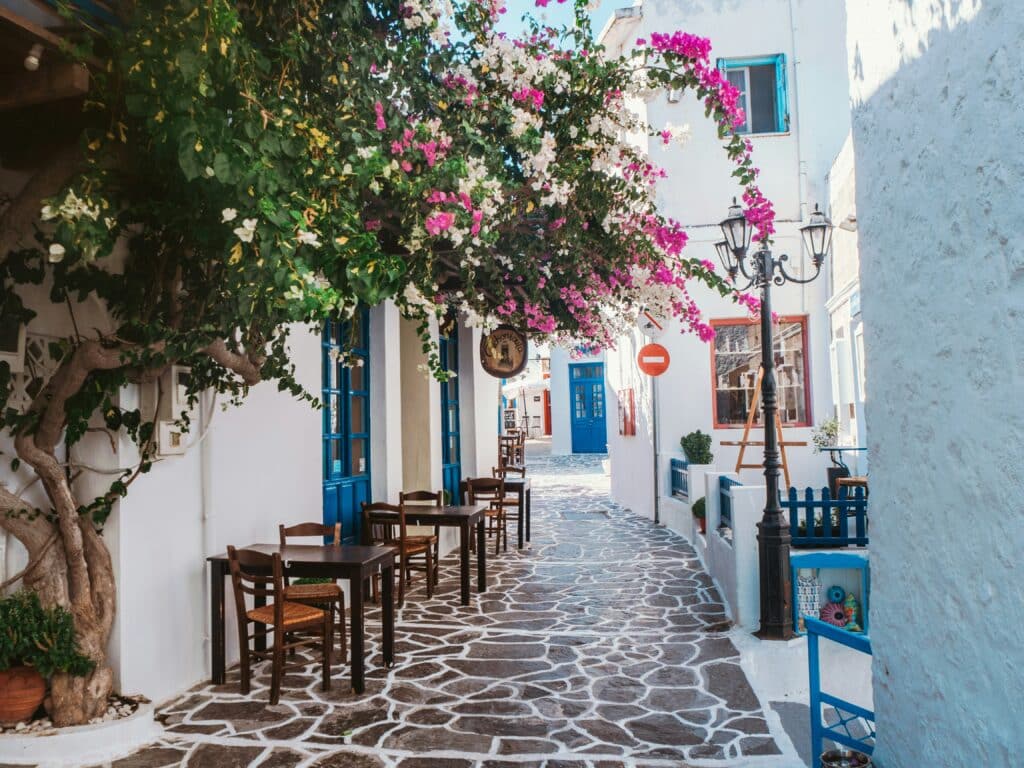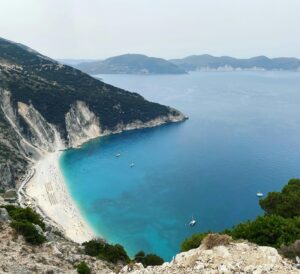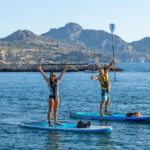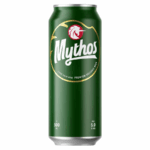Visit Milos through the centuries: volcanoes, marble and ancient civilizations
Obsidian: a natural resource and a leading export
An ancient presence marked by culture and art
Historical sites not to be missed
Between Venetian and Ottoman influences
Visit Milos and discover an island shaped by fire: geology and colourful landscapes
Milos owes its originality to more than just its story. Its spectacular relief, sculpted cliffs and unusually hued beaches are the visible traces of its volcanic past. The island lies on active soil, shaped by eruptions, mineral deposits and the elements. As a result, its landscape reflects both the violence and beauty of its geological origins.
Multicolored volcanic rocks
The diversity of minerals found on Milos explains its astonishing landscapes. Here we findblack obsidian, used since prehistoric times to make sharp tools. Some cliffs, such as those at Paleochori, turn red, ochre or yellow, depending on the concentration of sulphur, iron or manganese. What’ s more, natural contrasts vary according to the time of day, offering fascinating plays of light.
Kaolin and sulfur: the mining heritage
For centuries, Milos has exploited its natural riches. Kaolin, used to make porcelain, was mined in the east of the island. Sulfur, clearly visible in certain areas with their golden or coppery sheen, was also mined. Today, several old open-cast quarries are still visible, notably near Zefyria. They bear witness to the economic role of these deposits in the past.
Lunar landscapes and sculpted formations
Erosion and volcanic deposits have created some astonishing shapes. Sarakiniko, with its waves set in white rock, is the most famous example. However, other beaches such as Thiorichia or Papafragas also reveal naturally carved walls. These almost unreal landscapes attract many photographers in search of light and contrast.
With their raw beauty, these landscapes offer a spectacular backdrop for anyone wishing to visit Milos for its exceptional nature and mineral contrasts.
Milos villages: tradition, color and authenticity
Far from the famous beaches, the villages of Milos offer an immersion in island life. Each has its own rhythm, charm and particularities. Typical architecture, quiet lanes, fishing ports or viewpoints: each village reveals a different facet of the island. Explore the villages and feel the soul of the island. To get to know Milos as closely as possible, there’s nothing like exploring its authentic villages, where every alleyway tells a story.
Plaka: the hilltop capital
Plaka is the historic heart of Milos. Clinging to the hillside, it offers a breathtaking view of the Aegean Sea. Its white alleyways, blue domes and small squares invite you to take a stroll. At the end of the day, the atmosphere becomes lively around the terraces. The archaeological museum is also located here. The Panagia Korfiatissa chapel offers one of the most beautiful sunsets on the island.
Tripiti: between heritage and panorama
Just below Plaka, Tripiti is home to several treasures: the Paleochristian catacombs, the ancient theater and the site of the discovery of the Venus de Milo. The village overlooks Adamas Bay and offers a calm, airy setting. The architecture is simple but typical, with low, flower-filled houses. Tripiti combines culture and tranquillity.
Nearby, a small ecclesiastical museum also features icons, religious objects and embroidered textiles, extending the visit on a spiritual and artisanal note.
Klima: the postcard image
Klima is undoubtedly the most photographed village on the island. Built on the seafront, it is famous for its syrmata, fishermen’s houses with colorful doors. Today, some have been converted into stores or homes. In particular, the evening light reflecting off the painted facades creates a magical atmosphere.
Adamas: a lively port and a practical crossroads
Adamas (or Adamantas) is the main port of Milos. It’s home to a wide range of restaurants, accommodation, services and tour operators. Despite its functional nature, it’s still a pleasant place to live. The seafront promenade is lively, especially in the evening, and several beaches are within walking distance. In addition, the island’s geological wealth can be explored at the Mineral Museum.
Pollonia: softness and a family atmosphere
Pollonia is located in the north-east of the island. Quieter than Adamas, this seaside village has a relaxed , family atmosphere. It boasts excellent tavernas, a sheltered beach and a charming little port. What’ s more, it’s an excellent starting point for boat excursions to Kimolos or Poliegos.
Mandrakia and Firopotamos: coves and chapels
These two small seaside villages offer a picture-postcard setting. Mandrakia boasts a protected bay lined with colorful syrmata. In particular, the seafront Medousa tavern is renowned for its fresh fish. Firopotamos, on the other hand, is more remote but just as charming. A white chapel dominates a beach with crystal-clear waters, much appreciated by the locals.
Spectacular beaches and landscapes: white cliffs, turquoise coves and lunar formations
On Milos, nature shapes unique landscapes combining volcanic reliefs, secret beaches and dazzling cliffs. Each site seems sculpted by wind and time. Some beaches are only accessible by boat, while others are best explored on foot. Whatever the case, all offer an unforgettable experience. To explore its coastline is to discover an island in perpetual motion.
To visit Milos in all its splendor, nothing beats exploring its iconic beaches, secret coves and cliffs shaped by time.
Kleftiko: the Milos icon
Accessible only by sea, Kleftiko is a former pirate lair. White cliffs rise above a crystal-clear sea. It can be reached by boat from Adamas or Pollonia. Sea caves and limestone arches create a striking backdrop. All in all, swimming in this natural labyrinth is one of the highlights of any holiday.
Sarakiniko: a lunar landscape
Probably the most photographed spot on the island, Sarakiniko impresses with its white rocks sculpted by the wind. The absence of vegetation reinforces the sensation of walking on another planet. A small sheltered cove is perfect for swimming. The site is accessible by car, with parking nearby. However, it’s best to get there early or at the end of the day to avoid the crowds.
Tsigrado: the secret beach
Nestled between two cliffs, Tsigrado is well worth a visit. Access is via a steep descent with rope and ladder. Down below, a cove of golden sand awaits the more adventurous. The water is clear and often calm, perfect for snorkeling. What’s more, the intimate atmosphere makes it a highly sought-after spot.
Fyriplaka: colorful sand and turquoise water
Fyriplaka is easy to reach, with its pink and grey sand, set against a volcanic wall. The long beach is ideal for walking and swimming. A few deckchairs are available, but the place retains its natural charm. In particular, the contrast between ochre rock and turquoise sea is spectacular.
Papafragas: between caves and canyon
Located on the north coast, Papafragas is a stunning site. A narrow gorge opens onto the sea, framed by steep walls. Once accessible on foot, access is now restricted for security reasons. Nevertheless, the view remains impressive. The ancient caves carved into the rock can be admired from the top of the cliffs.
Thermal beaches and natural springs
Milos’ volcanic past is not limited to its sculpted cliffs. It can also be seen on certain beaches, where the water heats up naturally. Several coastal areas offer a unique bathing experience, combining relaxation and geothermal phenomena.
At Paleochori, for example, underground hot springs radiate their heat into the sea, warming the water in places. As a result, bubbles can sometimes be felt rising from the sand, proof of the volcanic activity still present.
A little further on, at Kanava, near Adamas, a small, undeveloped cove offers a surprising opportunity for a swim. The water temperature varies subtly from zone to zone. What’s more, the calm environment makes it an ideal spot for a break off the beaten track.
Finally, at Alikes, on the south coast, the water is often warmer due to underground movements. This phenomenon, though discreet, attracts those seeking a moment of natural relaxation.
Visit Milos beyond the beaches: sea, hiking and hidden corners
There’s more to Milos than its beaches. You can also discover the island’s trails, cliffs and inaccessible coves on foot. These activities allow you to experience nature in a more active way, while gaining access to spectacular, unspoilt locations. Every excursion becomes a visual and sensory adventure.
Kayak and paddle: get close to the coast
Some of Milos’ coves are best viewed from the water. Kayaking or paddling offer a gentle , immersive alternative to the traditional boat trip. Departures are from Provatas or Fyriplaka. Sliding between the rocks, you’ll discover hidden caves, narrow passages and deserted beaches. What’s more, these activities allow you to get up close and personal with the marine wildlife.
Boat trips: an island built for the sea
Many cruises depart from Adamas or Pollonia. Some circumnavigate the island, others target Kleftiko or Poliegos. In all cases, you can swim in inaccessible coves, enter caves and discover reliefs sculpted by the sea. Boats range from intimate sailing yachts to comfortable catamarans. In high season, it’s best to book early.
Secret coves and confidential snorkeling
Beyond the emblematic sites, some of Milos’ coves are not on any tourist map. Accessible only by boat, they offer a wild setting, perfect for snorkeling. The water is crystal-clear, the underwater relief astonishing, and the atmosphere much more peaceful than elsewhere. Excursions departing from Adamas or Klima allow you to explore these little-known corners, far from the crowds. A unique way to visit Milos by sea.
Hiking: between nature and history
Milos offers several signposted trails, accessible even to casual walkers. The route between Plaka and Tripiti passes through open countryside overlooking the bay. The Papafragas trail runs along the northern cliffs. The wilder path to Agios Ioannis winds through fig trees, hills and silence. Along the way, isolated chapels and old quarries add to the ambience.
Sykia cave: a collapsed natural gem
To visit Milos off the beaten track, these sea and land tours offer direct contact with the wildest island in the Cyclades.
Finally, accessible only by boat, the Sykia grotto resembles a crater open to the sky. The roof has collapsed, letting in soft light over turquoise water. Often visited as a complement to Kleftiko, it makes a spectacular stopover. Bathing here is a memorable experience, between raw rock and absolute silence.
Visit Milos and broaden your horizons: excursions to Kimolos and Poliegos
Milos is a splendid island in its own right, but it also offers an excellent base from which to explore the neighboring Cyclades. An excursion from Milos to Kimolos and Poliegos will enrich your stay with a change of pace. These two islands, although very close, offer distinct yet complementary experiences.
Poliegos: a wild, uninhabited island
Poliegos is the largest uninhabited island in the Aegean Sea. Accessible only by boat, its deserted beaches, white cliffs and dazzling waters are awe-inspiring. Indeed, the contrasts between the turquoise sea and the clear rock are striking. Several semi-private excursions leave from Pollonia, often combined with swimming and snorkeling breaks. For those seeking silence, this is an exceptional place.
Kimolos: the discreet charm of a neighbouring island
Just a 30-minute ferry ride from Pollonia, Kimolos retains a peaceful, deeply local atmosphere. Its main village, Chorio, is a concentrate of authenticity, with its white streets, flowers on balconies and small shops. The island is home to pretty beaches such as Prassa, as well as natural curiosities such as Skiadi, a rock formation sculpted by the wind. In just one day, you can circumnavigate the island and sample another, more discreet Cyclade.
Bonus: Agios Ioannis and the west coast of Milos
The west coast of Milos remains little visited, as it is less accessible by road. Some sea excursions include a stop at Agios Ioannis, a secluded beach dominated by a small perched monastery. Unlike the more touristy east, this part of the island offers an almost mystical atmosphere. For lovers of solitude, this is an option worth considering.
Local gastronomy: from local recipes to seafood flavours
Milos cuisine reflects the island: simple, generous and deeply rooted in tradition. Each meal celebrates local produce, wild herbs, garden vegetables and, of course, the sea. So to discover Milos is also to taste a sincere culinary identity.
Ladenia: the emblematic tart
Milos’ most famous dish is called ladenia. It’s a tart made witholive oil, tomatoes and onions. Halfway between focaccia and Greek pizza, it can be eaten warm, as an appetizer or on the go. Particularly in summer, it becomes a must in local bakeries.
Pitarakia: little cheese puffs
Pitarakia are small puff pastries filled with mizithra, a slightly tangy fresh cheese. Sometimes herbs or spinach are added. So every house has its own variation. What’ s more, they can be enjoyed hot or cold, at any time of day.
Seafood and grilled fish
In waterfront taverns, grilled octopus is a must-try local specialty. It is often sun-dried before cooking, which enhances its texture. The fish of the day, grilled whole, is served with lemon and olive oil. At the same time, many dishes feature seasonal vegetables and herbs picked on the island.
Local products and sweets
The island’s family gardens provide tomatoes, zucchinis, sweet onions and herbs. Local cheeses, such as xinomizithra, often accompany salads or pies. For dessert, candied quince, figs or homemade loukoumi are sometimes served. Tasting this cuisine is an integral part of the experience when you choose to visit Milos.
Where to eat in Milos: some of the best places to discover the local cuisine
There’s much more to Milos than its scenery: the island is also known for its tavernas, homemade dishes and local flavors.
Traditional Greek cuisine
Home cooking with a family atmosphere and a view of the Aegean Sea to boot.
Simple dishes, fresh produce and friendly waterside service.
A local institution, with family specialties based on island produce.
Seaside fish taverns
More creative or modern cuisine
Sleeping in Milos: colorful syrmata, sea views and Cycladic calm
Sleeping in a syrma in Klima
A peaceful seaside break in Pollonia
Pollonia has a relaxed atmosphere, a sheltered beach and excellent restaurants. The village is home to several hotels and guesthouses on a human scale, often with sea views. What’ s more, its small port makes it easy to reach Kimolos or Poliegos. Pollonia is perfect for travelers who want to visit Milos while enjoying a peaceful, gourmet setting.
Practical and central: Adamas
Authenticity and unobstructed views in Plaka or Tripiti
For a more secluded interlude
Photographing Milos: light, textures and colors
Dawn: pastel softness and peaceful villages
Noon: strong contrast and sparkling waters
When the sun is at its zenith, the colors intensify. At Fyriplaka or Tsigrado, the blue of the sea becomes almost fluorescent, contrasting with the red or gray hues of the cliffs. What’ s more, the sharp shadows make for highly graphic compositions. In this setting, even simple details – a boat, a rock – take on another dimension.
End of day: gold, blue and silhouettes
A few practical tips


